The planners of post-war London were people with a vision, but it wasn’t always one that it was possible to put into practice. They were not starting with a clean sheet, but with a city that despite its devastation was still largely intact.
We can still see much of their vision in the Barbican, where a large area had been more or less flattened. It integrates the high rise blocks with lower buildings as well as a large school and an Arts Centre, as well as a medieval church remaining at its centre. Most of the movement around the area is by pedestrians on its high-level walkways, well above any road traffic. It is a system that is popular with those who live there, though casual visitors find it confusing – and it had to be given yellow lines to follow to guide those going to the Art Centre.
Bits of that ‘ped-way’ or ‘high walk’ system extended out, with bridges across London Wall and Aldersgate St, and there were small sections of similar high walks to the north of the Guildhall and around Lower Thames St, as well as across Bishopsgate and around the Nat West Tower developmetn, with developers being required for some years to provide these to get planning permission, but the whole never developed into anything like a joined up system, which would have required far too much demolition of existing buildings.
People in general like to take the easiest route, not that which looks best on the architects or planners drawing boards, and the steps required to access these upper level streets were a considerable disincentive. Although the bridge across Wormwood St was a good vantage point for photographers before its closure (in part by the IRA) most pedestrians preferred the short wait at the traffic lights.
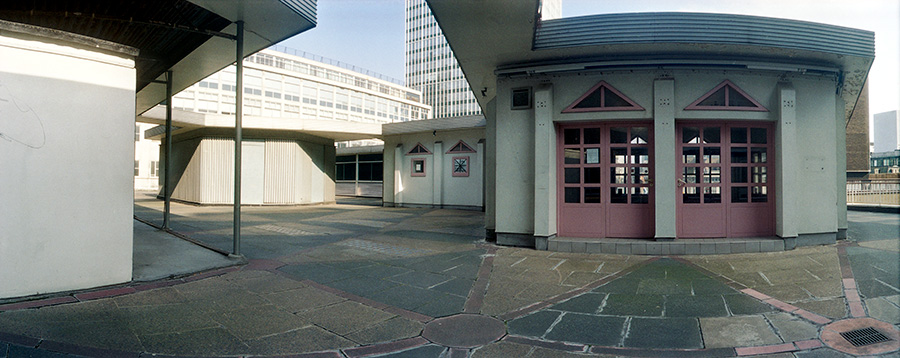
St Alphage Highwalk, 1992
Some years ago St Alphege Highwalk was closed and the bridge across London Wall to it from the Bassishaw Highwalk was demolished. It was one of a number of areas of London I had photographed for a show by London Documentary Photographers in 1992, using my newly acquired Japanese panoramic camera.
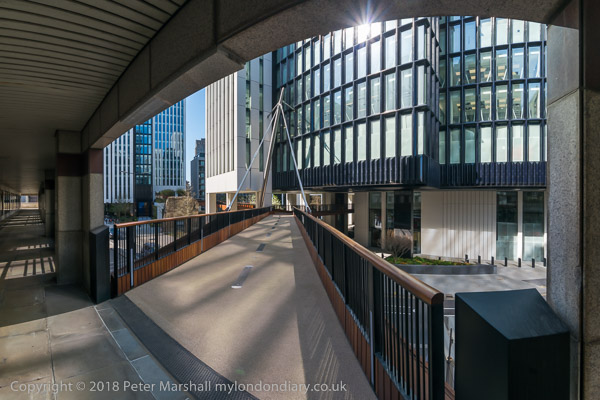
The whole site is now redeveloped, with a new bridge a few yards to the west of the former, and I again took a number of mainly panoramic images around the area, now using a digital camera.
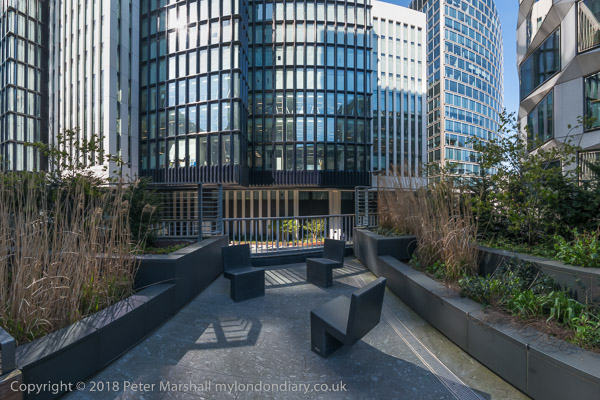
Where the old bridge was is now a dead end – and the walkways that are left have many such dead ends. The small triangular pavilions of my 1992 picture are now large tall office blocks, rather lacking in character, though doubtless considerably more energy efficient.
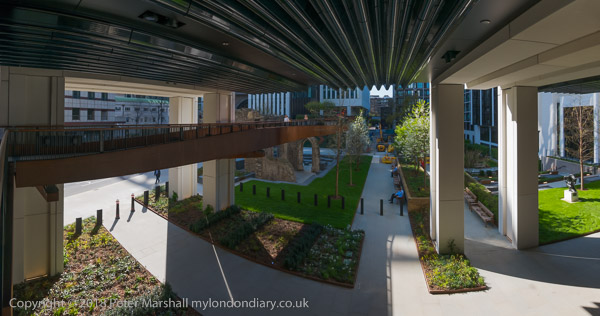
These blocks apart – and they are no doubt what made it all possible – the area is a more pleasant one now, with plenty of space to stroll around at ground level, as well as on new walkways, room for the workers to eat their lunchtime sandwiches (if they can leave the screens to which they are now chained.)
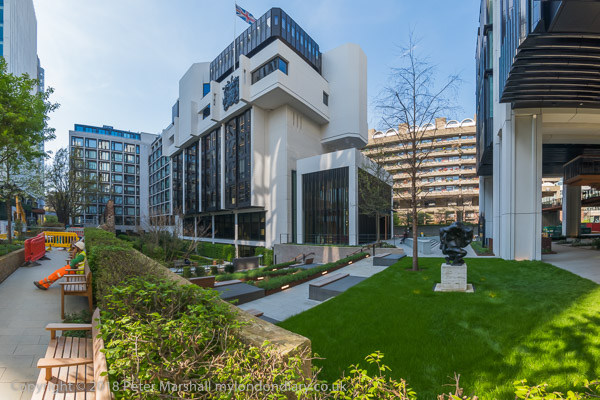
It opens up also the view of Salter’s Hall, one of the better modern buildings in London, where I was once briefly involved in an innovative chemistry teaching scheme, and also the ruins of St Alphege.
The digital panoramas are considerably easier to produce than when I used film. Not only is it much easier to work hand-held (and I’ve grown to hate tripods) but the give roughly twice the vertical angle of view, producing images within the standard 1.5:1 format of 35mm film, though I often find it useful to crop them at top, bottom or both to something more recognisably panoramic.
The horizontal angle of view is a little greater than the three swing-lens panoramic film cameras I’ve used, and around 50% more than is sensibly possible with a rectilinear view. Although the verticals in the images are straight, to get such a large angle horizontal lines away from the image centre have to curve. The images from the High Walk include some rectilinear views, mainly taken with a zoom at its widest, 18mm.
Many more pictures from around the area at City Highwalk.
______________________________________________________
There are no adverts on this site and it receives no sponsorship, and I like to keep it that way. But it does take a considerable amount of my time and thought, and if you enjoy reading it, a small donation – perhaps the cost of a beer – would be appreciated.
My London Diary : London Photos : Hull : River Lea/Lee Valley : London’s Industrial Heritage
All photographs on this and my other sites, unless otherwise stated, are taken by and copyright of Peter Marshall, and are available for reproduction or can be bought as prints.
To order prints or reproduce images
________________________________________________________